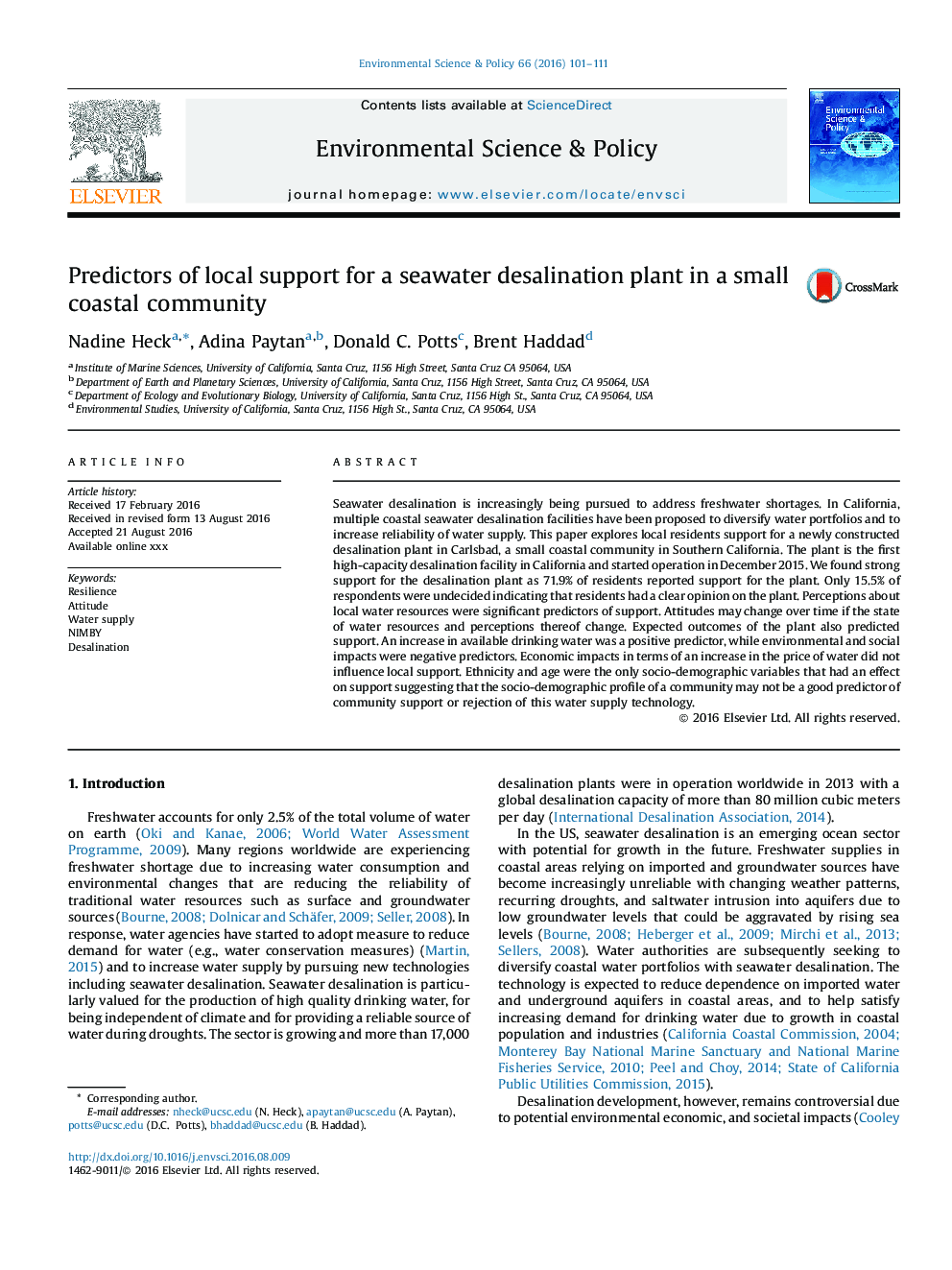| Article ID | Journal | Published Year | Pages | File Type |
|---|---|---|---|---|
| 1053410 | Environmental Science & Policy | 2016 | 11 Pages |
•The study identifies support for seawater desalination in a small coastal community.•Coastal residents reported high support for the new facility.•Perceptions of water resources and plant outcomes were significant predictors.•Ethnicity and age were the only socio-demographic predictors.•Distance of residence to the plant had no effect on support.
Seawater desalination is increasingly being pursued to address freshwater shortages. In California, multiple coastal seawater desalination facilities have been proposed to diversify water portfolios and to increase reliability of water supply. This paper explores local residents support for a newly constructed desalination plant in Carlsbad, a small coastal community in Southern California. The plant is the first high-capacity desalination facility in California and started operation in December 2015. We found strong support for the desalination plant as 71.9% of residents reported support for the plant. Only 15.5% of respondents were undecided indicating that residents had a clear opinion on the plant. Perceptions about local water resources were significant predictors of support. Attitudes may change over time if the state of water resources and perceptions thereof change. Expected outcomes of the plant also predicted support. An increase in available drinking water was a positive predictor, while environmental and social impacts were negative predictors. Economic impacts in terms of an increase in the price of water did not influence local support. Ethnicity and age were the only socio-demographic variables that had an effect on support suggesting that the socio-demographic profile of a community may not be a good predictor of community support or rejection of this water supply technology.
